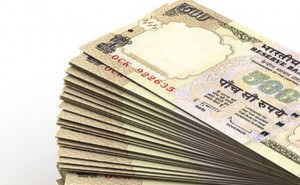
India World’s largest recipient of global remittances!
Growth in global remittances, will slow sharply this year due to weak economic growth in Europe, deterioration of the Russian economy and the depreciation of the Euro and ruble according to the latest World Bank’s migration and development.
The top five migrant destination countries continue to be the Untied States, Saudi Arabia, Germany, Russia and the United Arab Emirates and the top five remittance recipient countries continue to be led by India, China, Philippines, Mexico and Nigeria. In 2014, the total remittances reached £385 billion
($583 billion) of these, megaflows, which India received £46.2 billion ($70 billion), China £ 42.24 billion ($64 billion), the Philippines £18.48 billion($28 billion) according to Kaushik Basu, World Bank Chief Economist and Senior Vice President.
“ Migrants and remittances are clearly major players in today’s global economy, Israel and India have show how macro liquidity crises can be managed by tapping into the wealth of diaspora communities, while the Mexican migrants have boosted the construction sector”.
India is the largest recipient of remittance flows in the world receiving about £46.2 billion ($70 billion) from this source in 2014, according to World Bank data.
Partly due to the appreciation of the rupee, growth in remittances to India, the world’s largest recipient, slowed to 0.6 percent in 2014 (from 1.7 percent in 2013). In contrast, remittances soared to Pakistan (by 16.6 percent), Sri Lanka (9.6 percent) and Bangladesh (8 percent). Remittances are extremely important for several countries in the region: in Pakistan, Sri Lanka, Nepal and Bangladesh, remittances exceeded 6 percent of GDP in 2013, according to the latest available data. Growth in remittances to the region is expected to pick up to £83.16 billion ($126 billion) in 2016 and £87.12 billion ($132 billion) in 2017.
Non Resident Indian ( NRI) Deposits in Kerala (South India) have now crossed the magic mark of £1.1 million Rs 1 Trillion (lakh crore), soaring by more than 17% from Rs 93,884 crore to Rs 1.1million crore (at the end of 2014-15) in the space of just one year, according to data collected by the state level bankers committee (SLBC). This includes money from all parts of the world. The
Reserve Bank of India (RBI) data shows that there was a little over £76billion ($115 billion) in NRI accounts in India, which Kerala accounts for roughly a sixth of all the money deposited in NRI accounts.
A Kerala government survey showed that remittances sent by the diaspora support at least 5 million people in the state, which has a population of 31.5 million.
Kerala’s exodus began in the early seventies with the Gulf boom when unemployment rates touched an all-time high with youngsters, though highly literate, having to migrate in search of semi-skilled jobs. These NRIs seem to prefer public sector banks to private sector banks when depositing their money.
State government data shows that of the 16.3 million non-resident Keralites (the Centre for Development Studies puts the figure at a much higher 24 million), 88% live in West Asia. The maximum number of Keralites, around 5.73 million, reside in the UAE and around 4.50 million in Saudi Arabia. Many have been migrating to the US and Europe in the last decade thanks to the boom in infotech and fast-growing opportunities in healthcare.
The government data shows that in the US, there are over 78,000 Keralites, while in Europe there are nearly 53,000. Canada has close to 10,000 Keralites. Families have also migrated to the Africa with nearly 7,000 Keralites residing in different parts of the continent.

